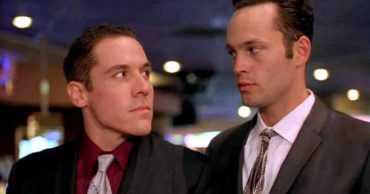Some of the most iconic films in history have been built on absurd movie plots that defy reason, logic, and basic science. Yet, somehow, those same films have captured the minds of millions of audiences. While critics scratched their heads and logic took a backseat, moviegoers bought tickets in droves, laughed, cried, and sometimes even craved sequels. Interestingly, the more outrageous the premise, the more memorable the movie tends to be.
From talking animals with careers and sentient objects to wild time-travel loopholes, these plots made absolutely no sense on paper; these movies embraced the bizarre and found a way to make it work on screen. The magic of cinema has always been its ability to make the impossible feel believable for one to two hours. With absurdity breeding creativity, especially when paired with charismatic performances, ridiculous plots can become cult classics. Here’s a look at some truly absurd movie plots that left viewers scratching their heads yet somehow loving every second.
Home Alone (1990)
Three decades since its release, the 1990 Home Alone remains a beloved holiday classic. However, when its story is truly broken down, the plot is undeniably absurd. The idea that a large family could accidentally leave an 8-year-old child behind while flying to another country already stretches believability. But it quickly crosses the line of ridiculousness as the film progresses. Kevin McCallister (Macaulay Culkin), a resourceful third-grader, single-handedly defends his home from two adult burglars.
Kevin uses a series of homemade traps that border on cartoon-level violence. While they did make for a family-centric comedy, nearly every one of Kevin’s clever contraptions would have landed the burglars in the ER or worse. Yet, somehow, in the world of Home Alone, the bandits bounce back again and again like they own the home. While the logic behind it is practically non-existent, audiences ate it all up, and it became a holiday staple. Other family-centric absurd movie plots from the early 1990s with a premise centering on a child tormenting adults include Problem Child (1990) and Dennis the Menace (1993).
The Nutty Professor (1996)
At its core, The Nutty Professor (1996) is a wildly exaggerated story about a brilliant but overweight scientist, Sherman Klump (Eddie Murphy). Sherman invents a serum that transforms him into a slim, confident, and wildly obnoxious alter ego named Buddy Love. The concept of a potion that can instantly change someone’s body shape, personality, voice, and even DNA is scientifically absurd. But then again, it was what made the plot so entertaining. However, Sherman’s transformation is so extreme that it borders on magic more than science. Despite the ludicrous premise, audiences loved the film for its blend of slapstick humor and Eddie Murphy’s multiple role performances.
Face/Off (1997)
Few films embody the spirit of absurd movie plots like John Woo’s sci-fi action film Face/Off. The action-packed spectacle had a premise centering on an FBI agent, Sean Archer (John Travolta), who swapped faces with a terrorist, Castor Troy (Nicolas Cage). Maybe, like most futuristic films, producers believed it would be surgically possible in the future. However, looking back decades later, its plot is plain ridiculous.
Travolta and Cage’s characters undergo a futuristic surgical procedure that doesn’t just exchange their facial features but also their voices, body types, and mannerisms. The movie requires audiences to believe that such a transformation is possible and foolproof. As such, even their closest friends and family can’t tell the difference. Yet, despite its outlandish premise, Face/Off became a Box Office hit and an action classic.
Being John Malkovich (1999)
As absurd as the movie plot went in the 1990s, few could come close to Spike Jonze’s surrealist fantasy comedy-drama Being John Malkovich. Its plot follows a puppeteer who discovers a secret portal into the mind of actor John Malkovich. Yes, the real John Malkovich. In the movie, there’s a hidden door on the 7 1/2 floor of an office building. The door allows anyone to experience life from John Malkovich’s perspective for 15 minutes, after which the person is ejected onto the side of the New Jersey Turnpike.
As ridiculous as it sounds, Being John Malkovich dives deeper into existential themes, philosophical chaos, and identity crises while staying rooted in its completely insane premise. The plot makes no real-world sense, yet it works because of the themes it touches. It also doesn’t help that it had a fairly star-studded cast that included John Cusack, Cameron Diaz, Catherine Keener, Charlie Sheen, and Octavia L. Spencer.
Scott Pilgrim vs. the World (2010)
Simply put, Edgar Wright’s Scott Pilgrim vs. the World is a video game romance storyline on steroids. It blends real-world romance with over-the-top video game logic. Michael Cera leads the ensemble cast as a socially awkward bassist who must defeat his new girlfriend, Ramona Flowers (Mary Elizabeth Winstead), seven evil exes in literal boss battles to continue dating her. If that seems confusing at first, it is because it actually is confusing. Having to deal with exes isn’t entirely new, but to battle to the death is as ridiculous as it is wild. Surprisingly, Scott Pilgrim vs. the World was a critical success, which is yet another proof that absurdity always has a place in cinema.
Looper (2012)
At first glance, Looper presents itself as a thought-provoking sci-fi thriller, but beneath the surface lies one of the most absurd movie plots of the decade. Its plot follows Joe (Joseph Gordon-Levitt), who works for a futuristic mob that sends targets back in time to be assassinated by their younger selves. What makes Looper absurd isn’t just the concept of time travel but its unapologetic disregard for the logical consequences of it.
Audiences are yet to wrap their heads around cinema’s continuous obsession with time travel. But Looper steps in to turn it all on its head. Caught somewhere between Back to the Future and The Terminator, Looper has future characters returning to kill themselves. While the premise is borderline ridiculous, Looper was a critical and commercial success.
Swiss Army Man (2016)
The Daniels’ surrealist comedy-drama is widely considered to have one of the most absurd movie plots ever put on screen, and proudly so. Paul Dano’s character, Hank, discovers a flatulent corpse (Daniel Radcliffe) washed up on the beach. Hank finds increasingly bizarre ways to survive with his newfound “Swiss Army man.”
What makes the plot so absurd isn’t just the surreal concept but how sincerely the film commits to it. The directors take what could have been juvenile toilet humor into an odd exploration of loneliness, friendship, and mental health. While it takes a while to get past the fact that Hank is walking around with a corpse, critics and audiences still find a way to make it entertaining.
Poor Things (2023)
Yorgos Lanthimos has long earned a reputation for his surrealist films. However, his 2023 Poor Things is a bold, surreal reimagining of the Frankenstein myth but with a wildly absurd twist. Emma Stone’s Bella Baxter is a young woman brought back to life by an unorthodox scientist, Dr. Godwin Baxter (Willem Dafoe). Dr. Baxter replaces Bella’s brain with that of her unborn child. The film’s plot is a total disregard for conventional logic. Despite (or because of) its madness, Poor Things still managed to earn critical acclaim and a devoted audience.
 Follow Us
Follow Us





